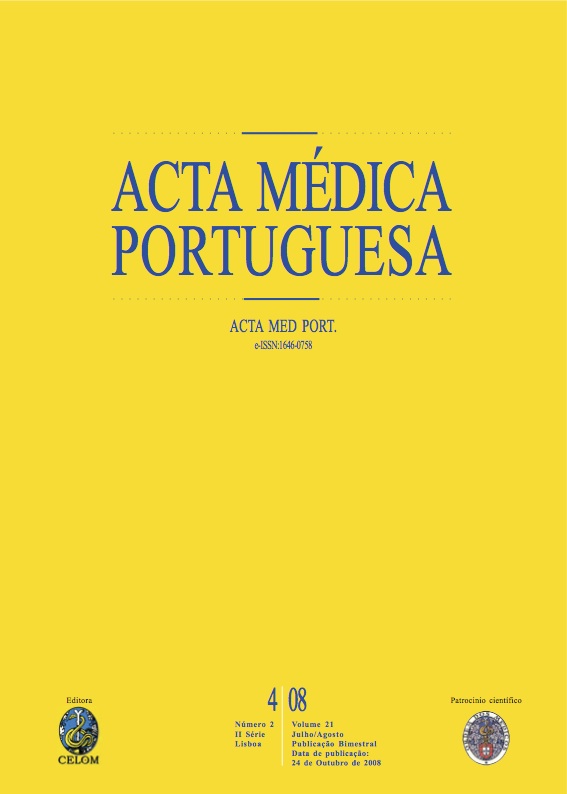Erupção a fármaco com eosinofilia e sintomas sistémicos (síndrome DRESS).
DOI:
https://doi.org/10.20344/amp.794Resumo
Adverse cutaneous reactions to drugs are frequent, affecting from 2% to 3% of all hospitalized patients. But only about 2% of these cutaneous reactions are severe and seldom are fatal. The term drug hypersensitivity syndrome refers to a specific severe drug reaction, including skin rash, fever, lymph node enlargement, and single or multiple organ involvement. The cutaneous rash is usually morbilliform. The drugs associated with the syndrome are: anticonvulsants, ACE inhibitors, Beta-blockers, allopurinol and sulphonamides. The differential diagnosis includes maculopapular rash, exfoliative dermatitis, acute generalized exanthematous pustulosis and Sézary syndrome. The interval between the starting of drug therapy and the onset of cutaneous reactions may be at least one month, and therefore the implication of the drug in the aetiology may be subdiagnosed.Downloads
Downloads
Como Citar
Edição
Secção
Licença
Todos os artigos publicados na AMP são de acesso aberto e cumprem os requisitos das agências de financiamento ou instituições académicas. Relativamente à utilização por terceiros a AMP rege-se pelos termos da licença Creative Commons ‘Atribuição – Uso Não-Comercial – (CC-BY-NC)’.
É da responsabilidade do autor obter permissão para reproduzir figuras, tabelas, etc., de outras publicações. Após a aceitação de um artigo, os autores serão convidados a preencher uma “Declaração de Responsabilidade Autoral e Partilha de Direitos de Autor “(http://www.actamedicaportuguesa.com/info/AMP-NormasPublicacao.pdf) e a “Declaração de Potenciais Conflitos de Interesse” (http://www.icmje.org/conflicts-of-interest) do ICMJE. Será enviado um e-mail ao autor correspondente, confirmando a receção do manuscrito.
Após a publicação, os autores ficam autorizados a disponibilizar os seus artigos em repositórios das suas instituições de origem, desde que mencionem sempre onde foram publicados e de acordo com a licença Creative Commons









